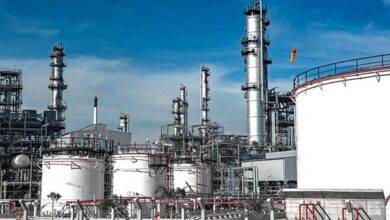Scott Dylan on AI Energy Consumption: A Looming Challenge for Sustainability

Artificial Intelligence (AI) has grown at an unprecedented rate, revolutionising industries from healthcare to finance and beyond. However, this rise in AI adoption comes at a significant cost – its energy consumption. Training and running AI systems, especially large-scale models, requires enormous computational power, which translates into hefty energy demands. As the world grapples with the climate crisis, AI’s energy footprint is becoming a central concern for both industry leaders and environmentalists alike.
The Energy-Intensive Nature of AI
Training a state-of-the-art AI model can require energy levels that few industries face. To put it in perspective, training a single large-scale AI model can generate as much carbon as the lifetime emissions of five cars. These models are not only energy-intensive during the training phase, but also require continuous power for inference—running real-time applications such as chatbots, recommendation engines, and image recognition systems. With AI adoption showing no signs of slowing down, the pressure on energy resources will only intensify.
A report from the Massachusetts Institute of Technology (MIT) estimated that the training of just one AI model could emit more than 284 tons of carbon dioxide equivalent. That’s the same amount of emissions as 125 round-trip flights from New York to Beijing. This type of AI growth cannot be sustained without significant environmental impact unless the industry takes decisive action.
Corporate Pledges: A Step in the Right Direction
Recognising the issue, tech giants like Google, Microsoft, and Amazon have started to make meaningful pledges to reduce their carbon footprints. These companies understand that AI energy consumption poses a long-term sustainability challenge.
Google has committed to making all of its data centres – which power their AI operations – run entirely on carbon-free energy by 2030. This is part of their broader goal to be carbon-free across all global operations. Likewise, Microsoft has gone a step further, pledging to become carbon negative by 2030. They have invested heavily in renewable energy and new technologies aimed at removing more carbon than they emit.
Amazon, through its Climate Pledge, aims to achieve net-zero carbon by 2040. Part of this strategy includes the decarbonisation of their data centres and AI-powered services. These corporate efforts highlight that major players are not only aware of the problem but are actively seeking solutions.
The Role of Innovation in Reducing Energy Demands
Corporate pledges are essential, but innovation within AI development is just as crucial. Current AI models are energy-hungry by design, but new techniques and technologies are emerging to combat this. One such approach is model compression, which reduces the size of AI models without sacrificing performance. By making models smaller and more efficient, less computational power is required, resulting in lower energy consumption.
Another key development is the shift towards edge computing, where data processing occurs closer to the source of data rather than in a centralised cloud. Edge computing reduces the need for constant communication with remote data centres, which can drastically cut down energy usage.
Additionally, the industry is exploring neuromorphic computing, which models computing chips after the brain’s neural networks. The human brain is a marvel of energy efficiency, processing vast amounts of information using the energy equivalent of a dim light bulb. Neuromorphic chips aim to replicate this, offering a future where AI systems could operate with a fraction of their current energy needs.
Efficient algorithms are also playing a vital role. Traditional algorithms require vast amounts of data and computing power, but researchers are developing new algorithms that achieve the same results with less data. The introduction of “Green AI”—a movement within the AI community—further highlights the importance of balancing accuracy and energy efficiency.
The Future of AI and Sustainability
As AI continues to evolve, it’s clear that the industry’s energy consumption will remain an issue that requires both innovation and corporate responsibility. AI leaders need to focus not just on growing their technology, but on ensuring it grows sustainably. Failure to do so could see AI contribute significantly to global emissions, exacerbating the very problems it aims to solve, such as optimising energy grids and improving environmental management.
Ultimately, the industry faces a critical juncture. Balancing the transformative power of AI with the urgent need for environmental stewardship is a challenge that cannot be ignored. The future of AI will depend heavily on how companies manage this balance. Reducing the energy consumption of AI is not just an environmental imperative; it’s a moral one.
If AI is to remain a tool for good, it must advance in a way that aligns with global sustainability goals. The next generation of AI technologies needs to be smarter, not only in terms of capabilities but also in how they consume resources. Anything less would be irresponsible in today’s climate-aware world.
Final Thoughts
The rapid rise of AI has brought about unparalleled technological advancements, but with it comes a growing responsibility to ensure these innovations are sustainable. While companies like Google, Microsoft, and Amazon are making commendable efforts to reduce the carbon footprint of their AI operations, there is still a long way to go.
AI developers must continue to innovate, finding new ways to cut down on the energy demands of training and running models. By focusing on solutions such as model compression, edge computing, and neuromorphic chips, the industry can create more energy-efficient systems without sacrificing performance.
As AI accelerates across industries, the pressure on energy resources will increase. How the tech community rises to this challenge will define AI’s role in shaping a sustainable future. The industry’s ability to meet this challenge will not only impact AI’s trajectory but also the health of the planet.





